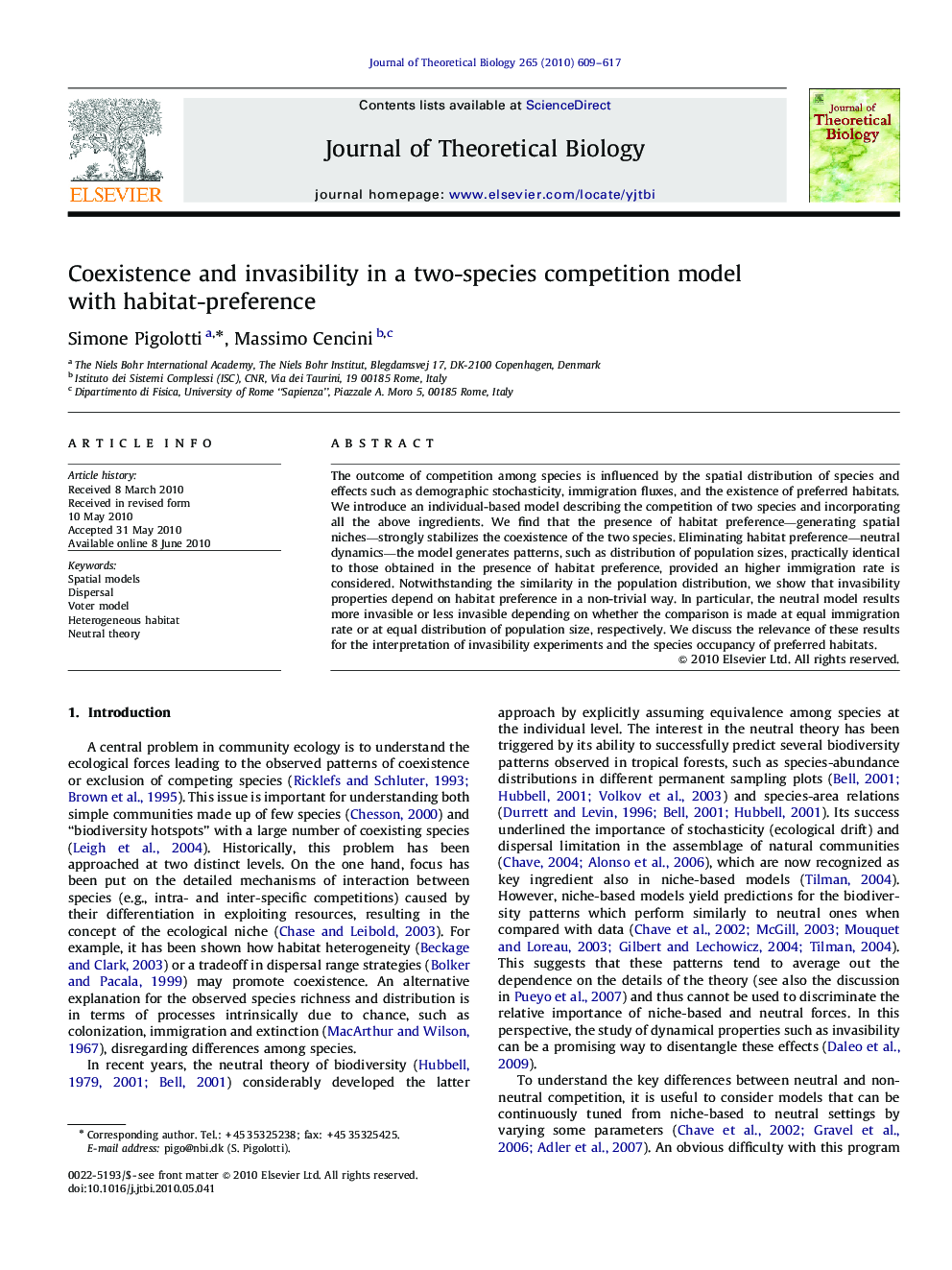| Article ID | Journal | Published Year | Pages | File Type |
|---|---|---|---|---|
| 4497464 | Journal of Theoretical Biology | 2010 | 9 Pages |
The outcome of competition among species is influenced by the spatial distribution of species and effects such as demographic stochasticity, immigration fluxes, and the existence of preferred habitats. We introduce an individual-based model describing the competition of two species and incorporating all the above ingredients. We find that the presence of habitat preference—generating spatial niches—strongly stabilizes the coexistence of the two species. Eliminating habitat preference—neutral dynamics—the model generates patterns, such as distribution of population sizes, practically identical to those obtained in the presence of habitat preference, provided an higher immigration rate is considered. Notwithstanding the similarity in the population distribution, we show that invasibility properties depend on habitat preference in a non-trivial way. In particular, the neutral model results more invasible or less invasible depending on whether the comparison is made at equal immigration rate or at equal distribution of population size, respectively. We discuss the relevance of these results for the interpretation of invasibility experiments and the species occupancy of preferred habitats.
